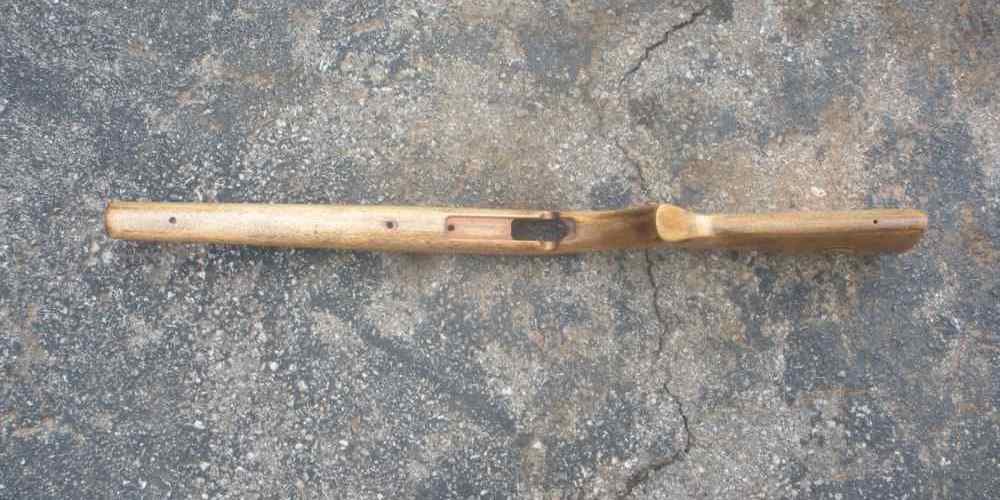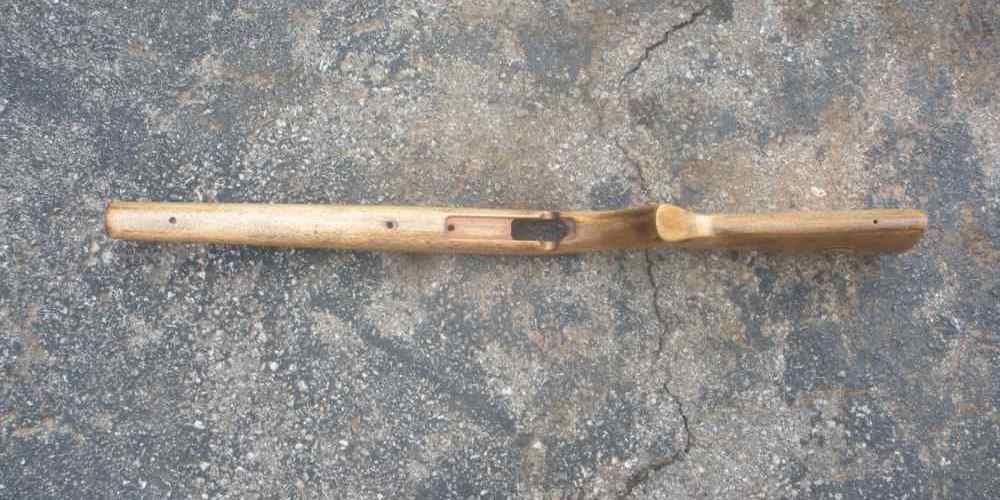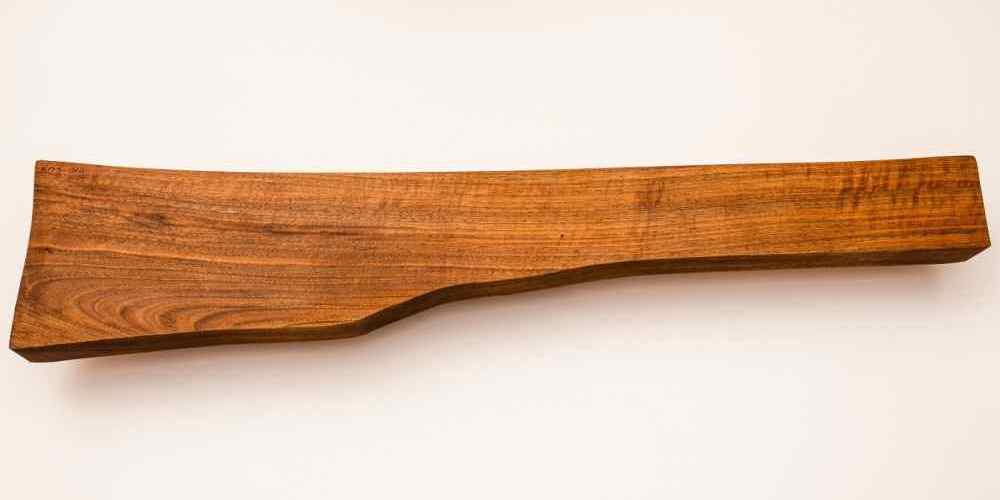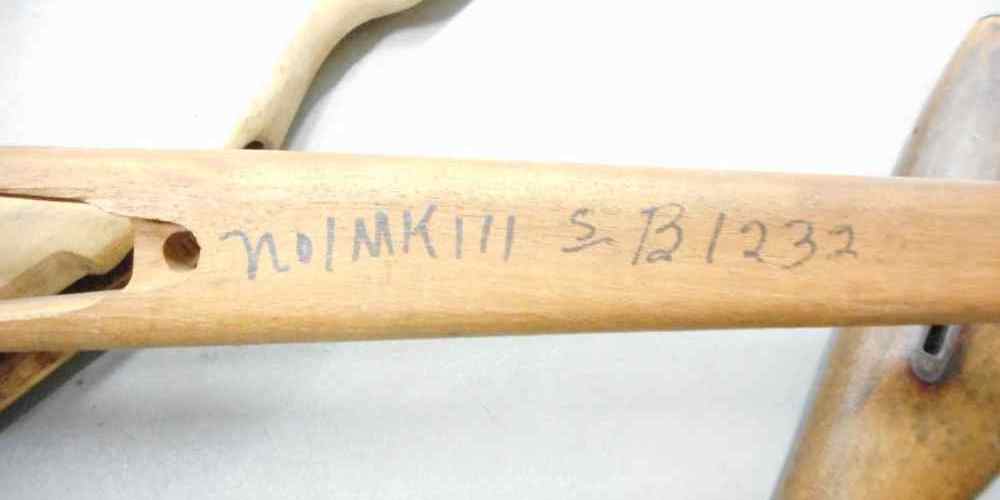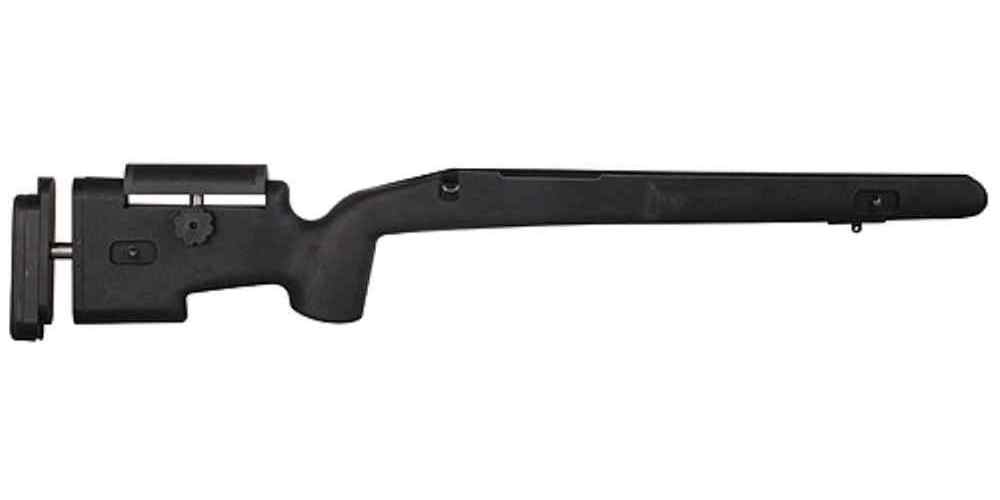“Precision starts with the perfect fit – The importance of rifle stock length on aim and accuracy.”
Importance of Rifle Stock Length in Shooting Accuracy
When it comes to shooting accuracy, many factors come into play. One often overlooked aspect is the length of the rifle stock. The stock of a rifle is the part that rests against the shooter’s shoulder, providing stability and support. The length of the stock can have a significant impact on aim and accuracy, making it a crucial consideration for shooters of all levels.
The length of the rifle stock affects the shooter’s ability to properly align their eye with the scope or sights. If the stock is too long, the shooter may have difficulty getting a proper sight picture, leading to inconsistencies in aim. On the other hand, if the stock is too short, the shooter may have to contort their body in order to get a proper sight picture, which can also lead to inaccuracies.
Having the correct length of the rifle stock is essential for maintaining a consistent shooting position. A stock that is too long or too short can cause discomfort and fatigue, making it difficult for the shooter to maintain a steady aim. This can result in missed shots and frustration for the shooter.
In addition to comfort and consistency, the length of the rifle stock also affects the shooter’s ability to control recoil. A stock that is too long can cause the shooter to be too far away from the recoil pad, leading to increased felt recoil and decreased accuracy. Conversely, a stock that is too short can cause the shooter to be too close to the recoil pad, which can also affect accuracy.
Finding the right length of rifle stock is a personal process that requires experimentation and practice. Shooters should consider factors such as their height, arm length, and shooting style when determining the optimal stock length for their rifle. It is also important to consider the type of shooting that will be done, as different shooting disciplines may require different stock lengths.
When adjusting the length of a rifle stock, shooters should pay attention to how it affects their shooting position and comfort. It may take some trial and error to find the perfect fit, but the effort is well worth it for improved accuracy and consistency.
In conclusion, the length of the rifle stock plays a crucial role in shooting accuracy. A stock that is too long or too short can lead to inconsistencies in aim, discomfort, and decreased control over recoil. Shooters should take the time to find the optimal stock length for their rifle, taking into account factors such as height, arm length, and shooting style. By finding the right stock length, shooters can improve their accuracy and enjoy a more comfortable shooting experience.
How Rifle Stock Length Affects Sight Alignment and Eye Relief
When it comes to shooting accuracy, many factors come into play, including rifle stock length. The length of a rifle stock can have a significant impact on sight alignment and eye relief, ultimately affecting your aim and accuracy. Understanding how rifle stock length influences these aspects can help you make informed decisions when choosing a rifle for hunting or target shooting.

One of the key ways in which rifle stock length affects sight alignment is through the positioning of the shooter’s eye in relation to the scope or sights. A stock that is too long can cause the shooter to have to stretch their neck forward to achieve proper eye relief, leading to discomfort and potentially affecting their ability to maintain a consistent sight picture. On the other hand, a stock that is too short can cause the shooter to have to scrunch up their neck, which can also lead to discomfort and impact their ability to align the sights properly.
Ideally, the length of the rifle stock should allow the shooter to comfortably place their cheek against the stock while maintaining a relaxed and natural shooting position. This ensures that the shooter’s eye is in the correct position to achieve proper sight alignment and eye relief. When the shooter’s eye is positioned correctly, they will be able to see through the scope or sights clearly and consistently, leading to improved accuracy.
Another way in which rifle stock length can impact sight alignment is through the length of pull, which is the distance from the trigger to the shooter’s shoulder. A stock that is too long can cause the shooter to have to reach too far to pull the trigger, leading to a less stable shooting position and potentially affecting their accuracy. Conversely, a stock that is too short can cause the shooter to have to scrunch up their shoulder, which can also lead to instability and impact their ability to maintain proper sight alignment.
In addition to sight alignment, rifle stock length also plays a role in eye relief, which is the distance between the shooter’s eye and the scope or sights. Proper eye relief is crucial for maintaining a clear and unobstructed view through the scope or sights, allowing the shooter to acquire and maintain a sight picture effectively. A stock that is too long can cause the shooter to have to stretch their neck forward to achieve proper eye relief, while a stock that is too short can cause the shooter to have to scrunch up their neck.
By choosing a rifle with the appropriate stock length for your body size and shooting style, you can ensure that you are able to achieve proper sight alignment and eye relief, leading to improved aim and accuracy. Experimenting with different stock lengths and seeking guidance from experienced shooters or firearms experts can help you find the right fit for your needs. Ultimately, understanding how rifle stock length affects sight alignment and eye relief can help you make informed decisions when selecting a rifle for your shooting activities.
The Relationship Between Rifle Stock Length and Recoil Management
When it comes to shooting accuracy, many factors come into play, including rifle stock length. The length of a rifle stock can have a significant impact on aim and accuracy, as well as recoil management. Understanding the relationship between rifle stock length and these factors is crucial for shooters looking to improve their performance.
One of the key ways in which rifle stock length affects aim and accuracy is through the shooter’s ability to properly shoulder the rifle. A stock that is too long or too short can make it difficult for the shooter to achieve a proper cheek weld and eye alignment with the scope or sights. This can result in inconsistent aim and accuracy, as the shooter may struggle to maintain a consistent sight picture from shot to shot.
Additionally, the length of the rifle stock can also impact the shooter’s ability to control recoil. A stock that is too short may not provide enough surface area for the shooter to properly shoulder the rifle and absorb the recoil. This can result in increased felt recoil, which can affect the shooter’s ability to stay on target and follow through with their shot.
On the other hand, a stock that is too long can also have negative effects on recoil management. A longer stock can make it difficult for the shooter to properly position their body and absorb the recoil, leading to increased muzzle rise and decreased control over the rifle. This can result in decreased accuracy and slower follow-up shots.
Finding the right balance in rifle stock length is crucial for shooters looking to maximize their aim, accuracy, and recoil management. A stock that is the correct length for the shooter’s body proportions will allow for a proper cheek weld, eye alignment, and shoulder position, leading to more consistent aim and accuracy. It will also provide the shooter with the necessary surface area to properly absorb recoil and control the rifle, resulting in improved recoil management and faster follow-up shots.
When selecting a rifle stock, shooters should consider factors such as their body proportions, shooting style, and intended use for the rifle. It may be helpful to consult with a knowledgeable gunsmith or shooting instructor to determine the optimal stock length for their needs. Additionally, shooters should take the time to properly fit and adjust their rifle stock to ensure a comfortable and effective shooting position.
In conclusion, rifle stock length plays a crucial role in aim, accuracy, and recoil management. Finding the right balance in stock length is essential for shooters looking to improve their performance on the range or in the field. By understanding the relationship between rifle stock length and these factors, shooters can make informed decisions when selecting and fitting a rifle stock. With the right stock length, shooters can achieve greater consistency, control, and accuracy in their shooting.
Adjusting Rifle Stock Length for Improved Shooting Performance
When it comes to shooting accuracy, many factors come into play. One often overlooked aspect is the length of the rifle stock. The stock of a rifle is the part that rests against the shooter’s shoulder, providing stability and support. The length of the stock can have a significant impact on aim and accuracy, making it crucial for shooters to find the right fit for their individual needs.
One of the main reasons why rifle stock length is important is because it affects the shooter’s eye relief. Eye relief refers to the distance between the shooter’s eye and the scope or sights on the rifle. If the stock is too long, the shooter may have to stretch their neck forward to get a proper sight picture, leading to discomfort and potentially affecting their aim. On the other hand, if the stock is too short, the shooter may have to scrunch up their neck, which can also lead to discomfort and poor shooting form.
Another reason why rifle stock length is important is because it affects the shooter’s length of pull. The length of pull refers to the distance between the trigger and the shooter’s shoulder. If the stock is too long, the shooter may have to reach too far to pull the trigger, leading to poor trigger control and potentially affecting accuracy. Conversely, if the stock is too short, the shooter may not be able to get a proper grip on the rifle, also affecting accuracy.
Finding the right stock length for your rifle is crucial for achieving optimal shooting performance. One way to determine the correct stock length is to measure the length of your arm from the crook of your elbow to the base of your trigger finger. This measurement can give you a good starting point for finding a stock that fits your body properly.
Once you have determined the correct stock length for your rifle, you may need to make adjustments to ensure a proper fit. Many rifles come with adjustable stocks that allow you to customize the length to your liking. If your rifle does not have an adjustable stock, you may need to consider purchasing a new stock or having a gunsmith make modifications to your existing stock.
When adjusting your rifle stock length, it is important to consider how it will affect your shooting form. A properly fitted stock should allow you to maintain a comfortable and stable shooting position, with your head in a natural and relaxed position. If you find that your stock length is causing discomfort or affecting your shooting performance, it may be worth investing in a new stock or making adjustments to your existing one.
In conclusion, the length of your rifle stock can have a significant impact on your shooting performance. By finding the right fit for your individual needs and making any necessary adjustments, you can improve your aim and accuracy on the range or in the field. Take the time to measure and adjust your stock length, and you may find that your shooting performance improves as a result.
Tips for Choosing the Right Rifle Stock Length for Your Body Type
When it comes to shooting accuracy, one of the most important factors to consider is the length of your rifle stock. The stock of a rifle is the part that rests against your shoulder, providing stability and support while aiming and firing. Choosing the right stock length for your body type can have a significant impact on your aim and accuracy.
One of the key considerations when selecting a rifle stock is your body size and shape. A stock that is too long or too short for your body can make it difficult to maintain a proper shooting position, leading to decreased accuracy. A stock that is too long may cause you to overextend your arms, resulting in a less stable shooting platform. On the other hand, a stock that is too short may cause you to hunch over, throwing off your balance and aim.
To determine the correct stock length for your body type, it is important to consider your arm length, shoulder width, and shooting stance. A general rule of thumb is to measure the length of your arm from your shoulder to your elbow, and then add a few inches to allow for proper shouldering of the rifle. Additionally, consider the width of your shoulders when selecting a stock, as a wider stock may provide better support and stability.
Another important factor to consider when choosing a rifle stock is your shooting stance. If you prefer a more upright shooting position, a longer stock may be more comfortable and provide better support. Conversely, if you prefer a more crouched or aggressive shooting stance, a shorter stock may be more suitable. Experiment with different stock lengths to find the one that allows you to maintain a comfortable and stable shooting position.
In addition to body size and shooting stance, it is also important to consider the type of shooting you will be doing. For long-range shooting or precision shooting, a longer stock may be more beneficial as it can provide better stability and control. However, for quick target acquisition or hunting situations, a shorter stock may be more maneuverable and easier to handle.
When selecting a rifle stock, it is important to try out different lengths and styles to find the one that works best for you. Many gun shops and shooting ranges offer the opportunity to test out different stocks before making a purchase. Take the time to experiment with different lengths and styles to find the one that allows you to maintain a comfortable and stable shooting position.
In conclusion, the length of your rifle stock can have a significant impact on your aim and accuracy. By considering your body size, shooting stance, and the type of shooting you will be doing, you can choose a stock that provides the support and stability you need to improve your shooting performance. Take the time to experiment with different stock lengths and styles to find the one that works best for you. Happy shooting!



